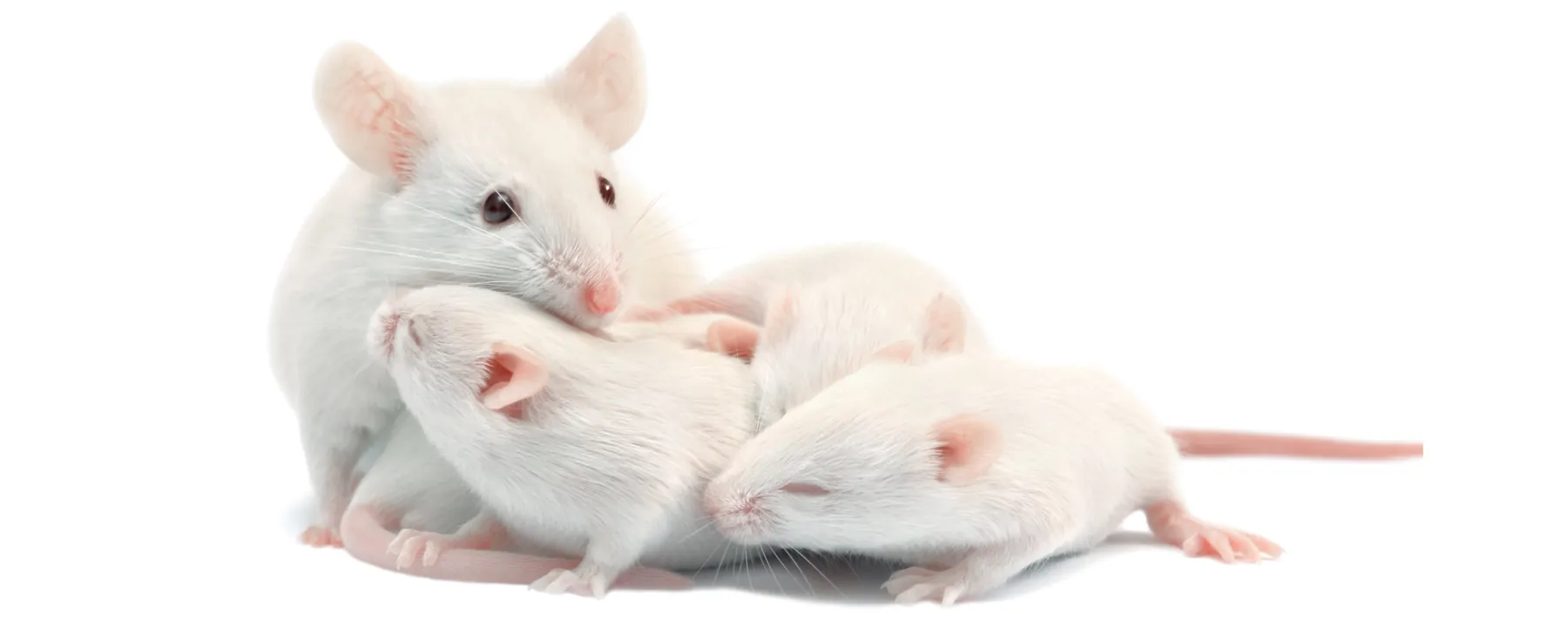UK becomes first to approve Casgevy genetic therapy for blood disorders
SOURCE: HTTPS://INTERESTINGENGINEERING.COM/
NOV 17, 2023
In Vivo Gene Therapy Cures Infertility in Mice
SOURCE: THE-SCIENTIST.COM
MAY 02, 2022

Within healthy ovaries, granulosa cells supply developing oocytes with nutrients and secrete hormones that regulate their further development. Without those cells’ support, oogenesis can’t occur, rendering an animal infertile. However, scientists at Kyoto University found a way to restore granulosa function in mice bred to have a granulosa-impairing mutation, according to research published April 27 in Cell Reports Medicine. They say the approach could someday lead to new infertility treatments for humans as well.
The experimental mice were bred to have silenced Kitl genes, which produce a molecule that mediates communication between oocytes and granulosa and fosters ovarian follicle development. In the absence of Kitl expression, oogenesis was prevented in female mice. Conceptually, developing a gene therapy to deliver a functional Kitl copy was simple, lead author and Kyoto University molecular geneticist Takashi Shinohara explains. However, figuring out a delivery mechanism that could actually reach the granulosa cells was difficult and took some trial and error.
Much like the blood-brain barrier that shields the brain from harmful substances in the blood, granulosa cells and oocytes are protected by a blood-follicle barrier that Shinohara says is notoriously difficult to cross. “I tried all the available viruses,” Shinohara says, including multiple variations of adeno-associated viruses (AAV), which are commonly used to deliver therapeutic DNA into the nucleus of cells so that it can be transcribed without permanently altering the host genome or being passed on to offspring. “Other viruses were injected but didn’t reach these granulosa cells. Only the AAV9 . . . could penetrate [the barrier].”
Not only did the gene therapy successfully rescue the damaged granulosa cells in 8 out of 10 mice, but those mice went on to have healthy offspring—something that Shinohara says caught him by surprise.
“I wasn’t sure they would become pregnant,” Shinohara tells The Scientist. “I was surprised to see those babies!”
He adds that the offspring grew up “pretty normally” and that the female offspring were still infertile, indicating that, as expected, the gene therapy didn’t get passed on to the next generation.
“AAVs are of special interest because they should not integrate into the host genome and replicate indefinitely or uncontrollably,” Harvard Medical School reproductive biologist Kaitlyn Webster, who didn't work on the study, tells The Scientist over email. “It’s important that the authors showed the gene-editing viral payload was not in the offspring of the treated mother, which is reassuring that the AAV is working as hoped and not permanently changing the maternal genome. This might suggest AAV therapy can be tunable or reversible. It is important to continue this investigation across more generations.”
Webster adds that success in fertility research is often defined “only by the occurrence of pregnancy or birth,” but that she has unanswered questions about the overall health of the offspring as well as of the AAV-treated mothers, such as whether the gene therapy resulted in behavioral or metabolic changes after the fact.
Questions remain and further work is needed, but Shinohara says his study hints at a future where AAV-mediated gene therapies become an in vivo infertility treatment for humans. “The question is how risky this procedure is,” he says, but “in principle it should work.”
LATEST NEWS
Artificial Intelligence
Eerily realistic: Microsoft’s new AI model makes images talk, sing
APR 20, 2024
WHAT'S TRENDING


Data Science
5 Imaginative Data Science Projects That Can Make Your Portfolio Stand Out
OCT 05, 2022

SOURCE: HTTPS://INTERESTINGENGINEERING.COM/
NOV 17, 2023
SOURCE: HTTPS://GENETICLITERACYPROJECT.ORG/
SEP 05, 2023
SOURCE: HTTPS://WWW.SCIENCEDAILY.COM/
AUG 07, 2023
SOURCE: HTTPS://WWW.SCIENCEDAILY.COM/
JUL 24, 2023
SOURCE: HTTPS://NEWS.MIT.EDU
JUL 20, 2023
SOURCE: BIOSPACE.COM
OCT 27, 2022